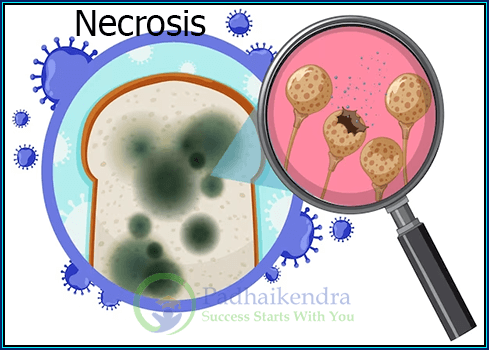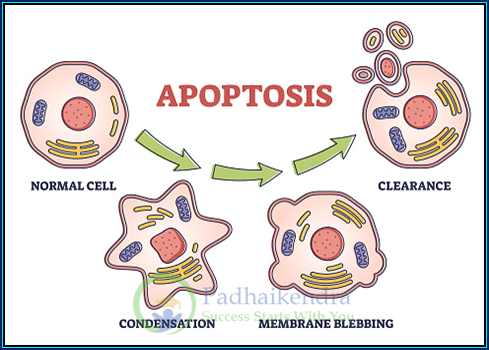Living things are made up of many cells, and these cells go through processes of growth and death. In order for living things to grow and survive, it is important that some cells die. Different types of cells are found in different parts of the body. Sometimes cells die because they are exposed to harmful things like toxic chemicals, injury, or lack of oxygen. This can cause a lethal disruption to the cell’s structure and activity.
There are two ways that cells can die. The first is called Necrosis, which is when a cell dies unexpectedly due to external factors. The second way is called Apoptosis, which is when a cell destroys itself in order to keep the body functioning smoothly. Even though both types of cell death end in the same way, they are very different in how they happen.

Difference between Apoptosis and Necrosis
| Criteria | Apoptosis | Necrosis |
|---|---|---|
| Definition | Programmed cell death | Unprogrammed cell death |
| Cause | Normal physiological process or pathological | Physical or chemical injury, infection or trauma |
| Energy | ATP-dependent | ATP-independent |
| Cell swelling | No | Yes |
| Inflammation | No | Yes |
| Cell membrane | Intact | Damaged |
| Cell contents | Enclosed in apoptotic bodies and recycled by phagocytosis | Released into extracellular space, causing inflammation |
| Signaling | Stimulated by internal and external signals | Not dependent on signaling |
| Morphology | Cell shrinkage, nuclear condensation and fragmentation, formation of apoptotic bodies | Cell swelling, organelle swelling, membrane rupture, release of cell contents |
| Tissue damage | Minimal | Extensive |
| Physiological function | Important in development, immune response and tissue homeostasis | Pathological and associated with tissue injury and inflammation |
This table highlights some key differences between apoptosis and necrosis, however, the actual distinction between these processes can sometimes be less clear-cut in real-life scenarios.





